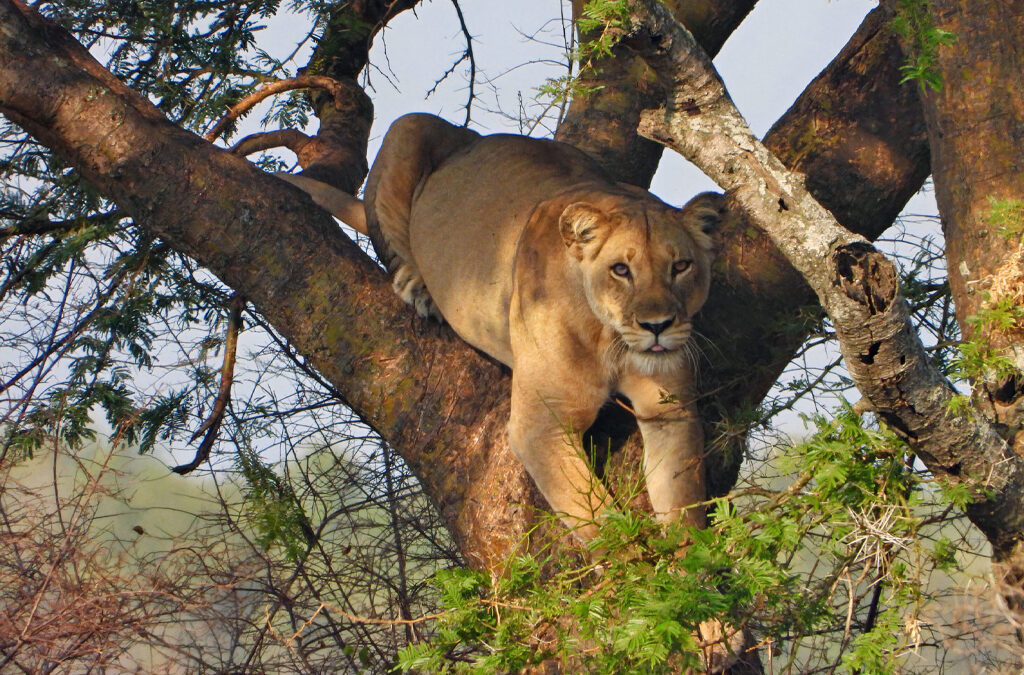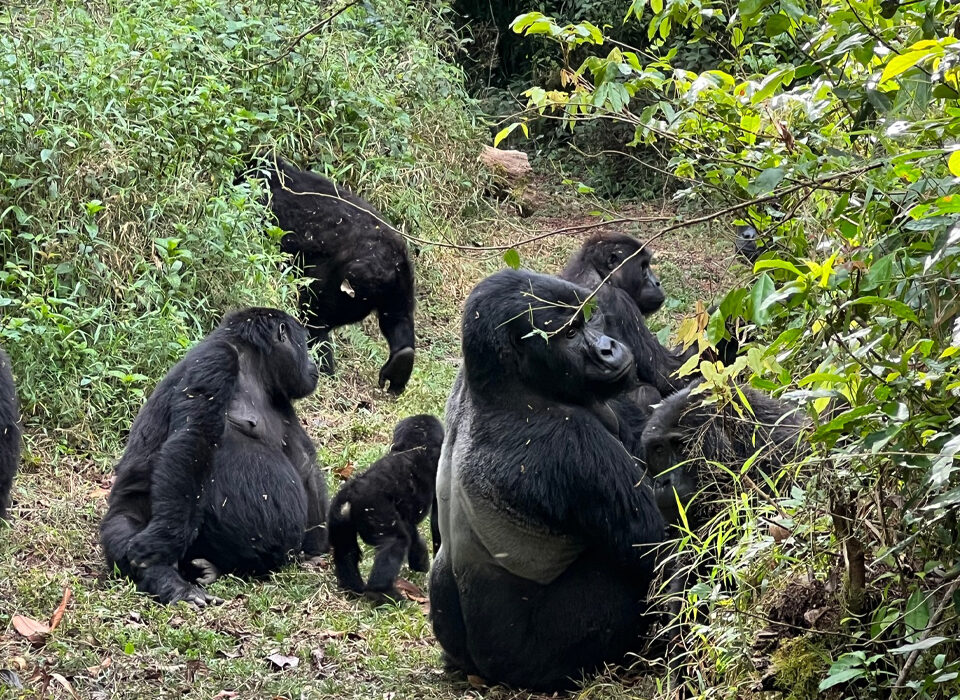- GET IN TOUCH WITH US:
- +256 753518160
- +256 777842166
- info@experiyatourcompany.com

Can I Visit Gorillas Without a Permit?
October 9, 2025
Is Gorilla Habituation Worth the Money?
October 10, 2025Unique Behaviors of Ishasha’s Tree-Climbing Lions

The tree-climbing lions of the Ishasha sector in Queen Elizabeth National Park present one of Africa’s most captivating wildlife spectacles. Ishasha is among the few places in the world where visitors can reliably witness these majestic predators resting high in the branches of fig and acacia trees. This unusual habit continues to fascinate both scientists and travelers.
Understanding the Tree-Climbing Behavior
The first glimpse of lions lounging in tree branches often surprises visitors. These powerful predators, weighing up to 250 kilograms, appear remarkably relaxed as they drape their muscular bodies across the branches. Unlike leopards, who climb with natural agility, lions are not instinctively arboreal. Yet in Ishasha, they have mastered this skill over generations.
Tree climbing here is not an instinct passed down by genetics but a learned behavior. Young cubs watch their mothers and other pride members ascend trees and gradually imitate them. Through observation and repetition, this habit becomes part of the pride’s cultural tradition—an identity shared and passed down from one generation to the next.
The Ishasha Environment and Its Influence
Ishasha’s unique landscape has shaped this adaptation. The region is a blend of open savannas and scattered fig and acacia trees, which provide both opportunity and necessity for climbing.
During the wet season, swarms of tsetse flies and biting insects make life on the ground uncomfortable. Climbing trees allows the lions to escape these pests and rest in peace. The treetops also offer relief from Ishasha’s intense midday heat. Cooler air circulates above the ground, and the shade helps lions regulate their body temperature. In this way, the trees provide comfort, safety, and a survival advantage.
Motivations Behind the Behavior
Several factors drive Ishasha’s lions to climb trees. Their main motivation is to avoid biting insects that thrive at ground level, especially after rain. A breeze at higher altitudes keeps the flies away, allowing the lions to rest undisturbed.
The elevated branches also serve as cool, shaded resting spots during the heat of the day. By conserving energy and reducing heat stress, the lions maintain hydration and health in the harsh savanna climate. From these perches, they also enjoy a wide view of the plains, making it easier to watch prey movements or detect potential threats.
Although they don’t hunt from trees, the elevated view helps them plan their ground-based hunts more effectively. Occasionally, trees also offer safety from larger animals such as elephants or buffaloes. When danger approaches, lions can simply climb until the threat passes. Over time, this behavior has become a proud cultural hallmark of Ishasha’s lions.
Daily Life in the Trees
Visitors to Ishasha often see lions sprawled across branches, especially in the afternoon after a morning hunt. Like other lions, they rest for 16 to 20 hours a day. The difference is that Ishasha’s prides prefer to spend much of this time above ground.
When hunting, they descend from their perches to stalk prey such as Uganda kob, warthogs, and buffaloes. Their teamwork and stealth remain as effective as ever. The hours they spend resting in trees allow them to conserve energy for these demanding hunts.
Preferred Trees in Ishasha
Not every tree suits these lions. They show a clear preference for large sycamore figs and acacias. These trees have wide, horizontal branches strong enough to support a lion’s weight and thick foliage that offers shade. Some of these trees have become familiar landmarks, regularly visited by the same prides over the years.
Social Dynamics in the Trees
Within the trees, Ishasha’s lions maintain their typical pride hierarchy. Female lions form the stable core, while males defend the territory. What makes Ishasha’s prides unique is their shared arboreal space. Families males, females, and cubs often lounge together on the same tree.
These moments reveal the deep social bonds within the pride. Lions groom one another, rest side by side, and maintain gentle physical contact. It’s a striking sight that captures the warmth of their relationships and the beauty of their adaptation. For many visitors, these tree-top gatherings are among the most photogenic moments in African wildlife.
Conservation Challenges
Despite their fame, Ishasha’s tree-climbing lions face serious threats. The population remains small fewer than 40 individuals and highly vulnerable to habitat loss, poaching, and human-wildlife conflict.
As nearby communities grow, livestock predation sometimes triggers retaliatory killings. Conservationists work with locals to reduce these conflicts through education, livestock protection, and rapid response teams. Habitat loss from farming and deforestation further strains the ecosystem, reducing prey numbers and suitable trees for climbing.
Tourism brings much-needed revenue but also poses risks. Too many vehicles or off-road driving can disturb the lions and damage their fragile habitat. Responsible tourism is therefore essential for the pride’s survival.
The Future of Ishasha’s Tree-Climbing Lions
The tree-climbing lions of Ishasha embody adaptability and intelligence. Their behavior is a living example of how wildlife can evolve culturally to survive in changing environments.
Protecting them will require joint efforts between conservation authorities, local communities, and eco-conscious travelers. As long as the fig and acacia trees stand tall over the golden savanna, visitors will continue to witness this extraordinary sight lions resting gracefully among the branches, a living symbol of nature’s endless creativity.



